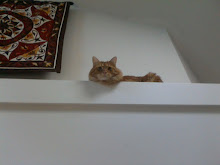
The Bishop of Guggenheim's Regiment of Horse has its origins in the Troop of Guides raised by the Bishop's predecessor for ceremonial and escort duties. Such was the nature of the violent times following the break-up of the Unangenehmes und nicht Notwendiges Empire, the escort part of their duties was no sinecure.
Within a few months of the Troop assuming active duties it became clear its numbers were insufficient to guarantee the Bishop's safety on his travels. In one alarming incident the Troop were surprised by a large band of deserters from the former Imperial army while the Bishop was spending a night in the village of Pfalz-Unterschift. The Troop only just succeeded in dispersing them and guiding their principal to safety. A number of troopers died in the skirmish and their names were entered on a roll of honor in the barracks.
Within a week of the Bishop's return to Guggenheim the call went out for new recruits "of sober, honest and trustworthy disposition" to gathered to the colors in order to increase the strength to four full squadrons. Unfortunately the Bishop died before the muster was complete, but his successor finished the task. In the few years since its formation to the outbreak of war the Regiment proved itself a tough and devoted force to be reckoned with.
Ironically with the coming of war the Regiment has become a victim of its own success. The Hetzenberg army's need for cavalry is strong, and the presence of a "ready-made" fully-formed and equipped regiment in the Duchy proved too tempting. As a result the Duke "federalized" it. This did not pass without a lot of horse-trading! The Bishop gained a number of concessions connected with land and trade tariffs, which his brother the Duke thought fair exchange. One concession he was pleased to grant was the inclusion of the Regiment in his own Guards cavalry brigade. It remains to be seen if the Regiment lives up to their status once engaged in full combat on the field of battle - a different environment to escort and ceremonial duty.
~~~~~~~~~~~~~~~
The uniform comprises a coat of clerical black, with cuffs and turnbacks of purple to denote their service to a Bishop. The saddle cloth is in the principal colors of the city of Guggenheim, with the mitre of a bishop in the corner. The Regiment's horses are all chestnuts, with the exception of the Colonel, guidon bearer and trumpeter, who ride greys.





4 comments:
Nice colors! That's one well protected Bishop. ;)
I like the sound of the horses,too. No Appaloosas I guess, huh?
The association of black and purple is gorgeous!
From where did you start: did the history of the unit lead to its uniform, or was it the reverse? Most sincere compliments, anyway!
Jean-Louis
Appaloosas, C? Hmm, now there's an idea! =) Maybe some kind of exchange program of bloodstock with the American colonies could be arranged... (I love your books BTW!)
And thank you, Jean-Louis. The name just sprang into my mind, along with the image of the uniform. (One of the "perils" of being a writer is we're more prone than most to that kind of thing happening ;). The history took a little more working out to ensure it was consistent with the image. I'm pretty pleased with the result.
My first order of RSM95 Hanovarian heavy cavalry will be on its way soon, and they'll be painted up as this regiment. My cavalry units will be 12 figurines in size, except for the hussar regiments which will probably be 24.
Hope a *lot* of other names / images combinations will sprong to your mind!
This will in the end probably imply a far larger Hetzenberger army than currently planned, but it's part of the Wargamer Syndrome - a symptom specially accute as soon as you start designing your own uniforms rather than being restricted by historicity.
Then, Hetzenberg needs an arch-rival with a centuries-old feud, I suspect?
Compliments,
Jean-Louis
Post a Comment